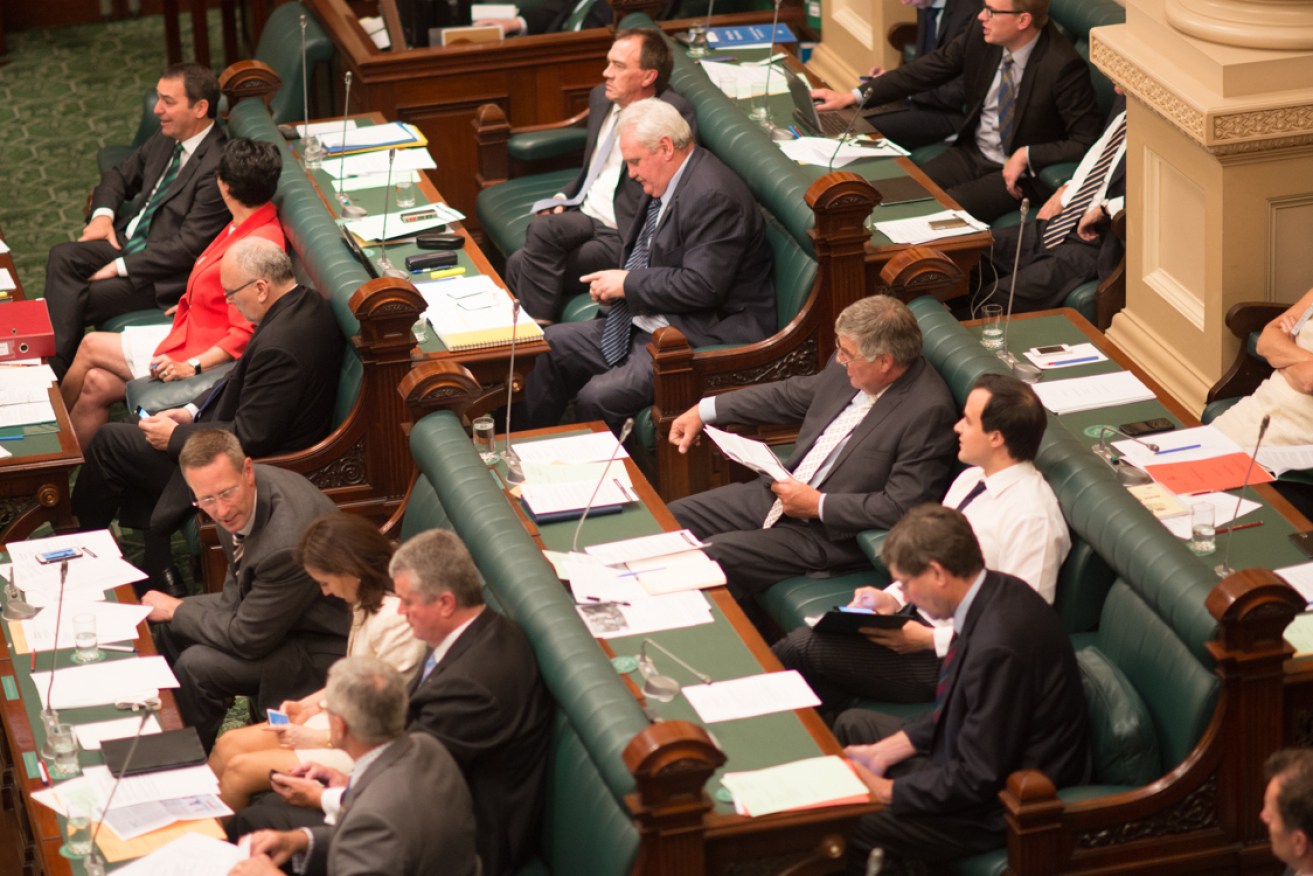Why the SA Liberals need better-run factions
The state Liberal Party should re-visit attempts to formalise and strengthen its factions. The reward, writes former Liberal minister Mark Brindal, could be a decade of political domination.

The state Liberal Party needs stronger factional discipline and leadership, says Mark Brindal. Photo: Tony Lewis/InDaily
Factions are an unfortunate necessity in large parliamentary parties.
Such coalitions should centre on matters of principle and ideology. Just as the conservative ALP faction has a view of the nature of government that significantly differs from the views of the ALP left, the right of the Liberal Party differs from the moderates.
Successful synthesis is Howard’s “broad church.” It produces the perfect choir, capable of magnificence because each voice blends seamlessly to produce a unified whole.
The ALP factions have played big part in their electoral success. Compared to the Liberal factions, they are more philosophically grounded, and are more clearly identified, disciplined and led.
Consider the State Bank Collapse. It destroyed then Premier John Bannon’s factional allies.
The Right cannibalised the middle ground to become predominant. All agreed that unaligned Mike Rann should lead. He accepted on the condition that he be given two elections without challenge. It was enough. After the 2002 election his strategy and negotiation skills enabled him to form Government. Labor is still there.
While ALP factions are, internally, fiercely combatant, externally they are united. They act as one seamless cohort.
Occasionally cracks appear. Frances Bedford is an excellent long-term member loosely aligned to the numerically weakest faction. Highly regarded, she has proved useful in winning a marginal seat.
What are they? Members of Parliament working towards Liberal Government or a Masonic Lodge of Mutant Ninja Turtles?
Since the recent redistribution made her seat safe, it became plum for acquisition. Right heavyweight Jack Snelling staked his claim. Fiercely independent, Bedford is a woman who bridles at coercion.
Luckily for the ALP she is a woman of high principle. In 2018 she might well run as an independent but, no matter how badly she’s treated, hell will freeze before she will bring down a Labor Government.
Notwithstanding this episode, generally, factions are an ALP strength.
For the Liberals, factions seem a curse. More often than not factional bickering is an ongoing circus preoccupying members and providing a public spectacle.
Maybe it’s inherent in the nature of the parties. For the ALP the common good is a tenet. The Liberal Party emphasises individualism. It attracts people who believe in individual rights.
While Liberal factions are named after the two great divisions of the political right, Conservative and Liberal, the reality of factional groupings is much more loose.
Where but in the South Australian Liberal Party, could Steele Hall, essentially the father of modern Liberalism, and Joan Hall be numbered as conservatives? Both are quintessential moderates, champions of electoral reform and social issues, Davids to the Goliaths of the entrenched conservatives of the time. Yet both, and others including Graham Ingerson, are numbered as conservatives. Meanwhile some highly conservative members were numbered as moderates. Wayne Matthew, long considered one of Dean Brown’s lieutenants, is but one example.
Liberal factions are personality based. They can be surprisingly fluid. A cynic might observe that numbers that gravitate seamlessly to whichever group best serves their personal interests inflates the strongest factions.
Herding cats would be a much simpler job that trying to organise Liberal factions.
If factional groupings can be a strength, what can the Liberals do to turn their current weakness around?
The moderates are the exemplar. They have clear leadership figures who have earned that role over time and are respected even by enemies. They are disciplined and united. Because of this, they have punched above their weight for decades. Currently they are the SA party’s driving force.
When Senator Nick Minchin led the SA right, they were a force to match the moderates. His successor, Cory Bernardi, did not prove equal to the task. One or two state MPs have tried to claim the mantle but the Morialta pre-selection fiasco indicates that he who would put on a crown must have the capacity to reign.
Some are too timid even to be identified. When I recently asked a right heavyweight about the leadership and his factional allies, I was told that they did not identify members. What are they? Members of Parliament working towards Liberal Government or a Masonic Lodge of Mutant Ninja Turtles?
The Liberals could dominate the next decade of South Australian politics. However, before they can do so they need to sort themselves out.
Both Nick Minchin and Isobel Redmond advocated formalised factions so that decisions could be negotiated in an ordered way. A member would be free either to identify with a faction or as an independent. It’s an idea with merit.
Above all, Liberal factions require substance and effective leadership.
The savings made from not purchasing all those cloaks and daggers could be spent on an innovation – winning votes.
Mark Brindal was a state Liberal MP from 1989 until 2006. He held a number of ministerial portfolios between 1998 and 2002. He is now involved in academic writing and is a public policy consultant.




